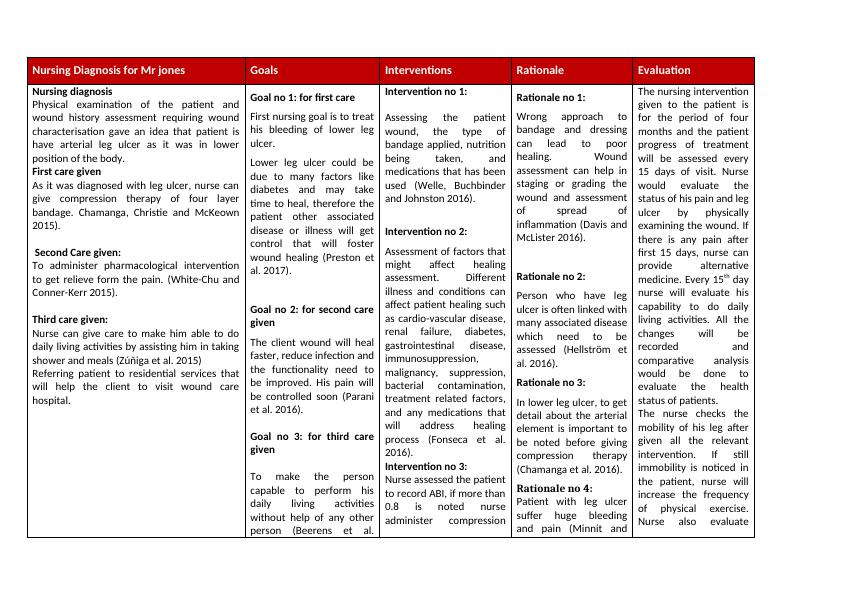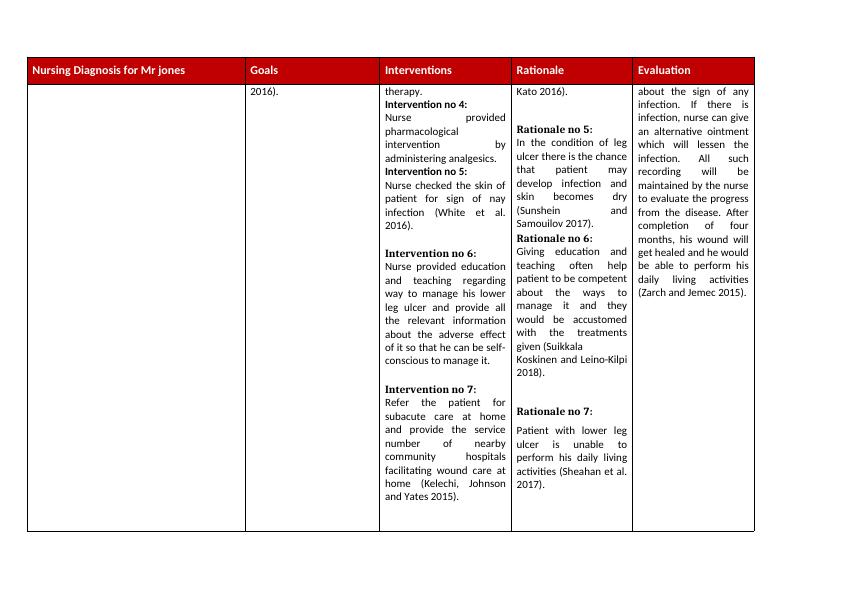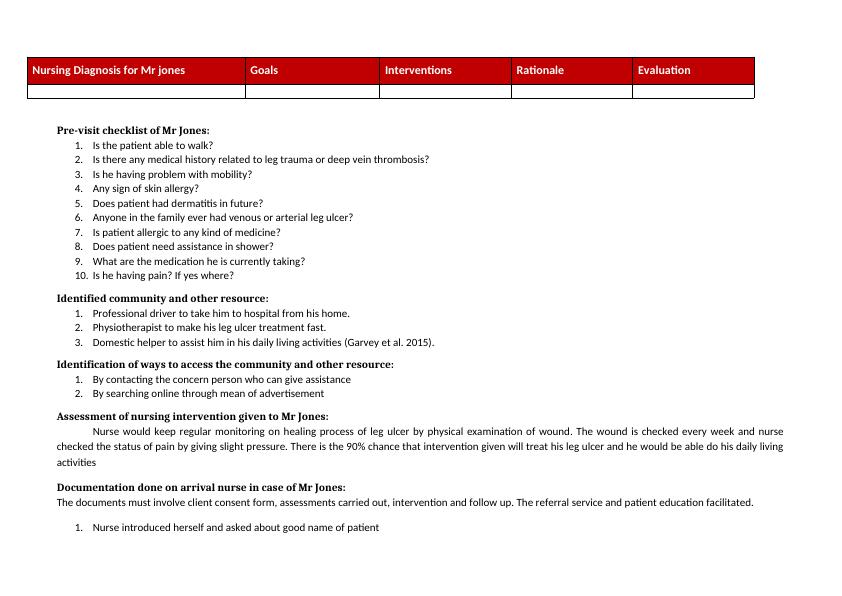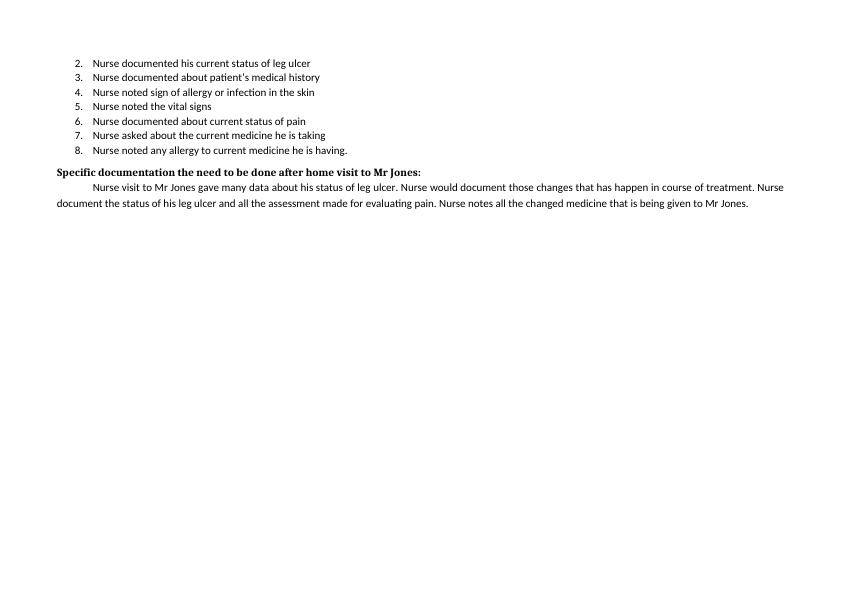Nursing Diagnosis for Mr Jones
Complete a case study on applying nursing practice in the primary health care setting.
11 Pages3776 Words297 Views
Added on 2023-04-21
About This Document
This document discusses the nursing diagnosis and interventions for Mr Jones, who has leg ulcer and COPD. The first care given includes compression therapy for the leg ulcer. The goals of the care include treating the ulcer, controlling associated diseases, and improving the patient's ability to perform daily activities. The interventions involve assessing the patient, administering pharmacological intervention, and providing education and teaching. The rationale for the interventions is explained, and the evaluation of the care is discussed.
Nursing Diagnosis for Mr Jones
Complete a case study on applying nursing practice in the primary health care setting.
Added on 2023-04-21
ShareRelated Documents
End of preview
Want to access all the pages? Upload your documents or become a member.
Question 4 Priority Nursing interventions.
|2
|496
|432
Chronic Wound Dressing: A Gap in Nursing Knowledge
|5
|1131
|224
Case Study Review: Wound Management and Pain Management
|11
|2220
|45
Effectiveness of Compression Hosiery in Preventing Venous Leg Ulcers
|4
|727
|62
Research Study - Need For Promoting Nursing Knowledge For Leg Ulcers
|17
|6678
|48
Management of Elderly Patient With Leg Ulcer - Assignment
|3
|650
|76




